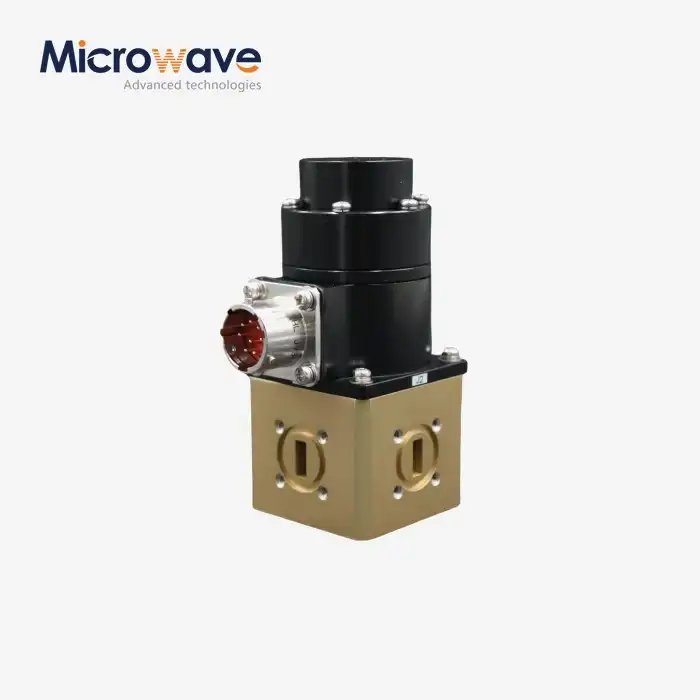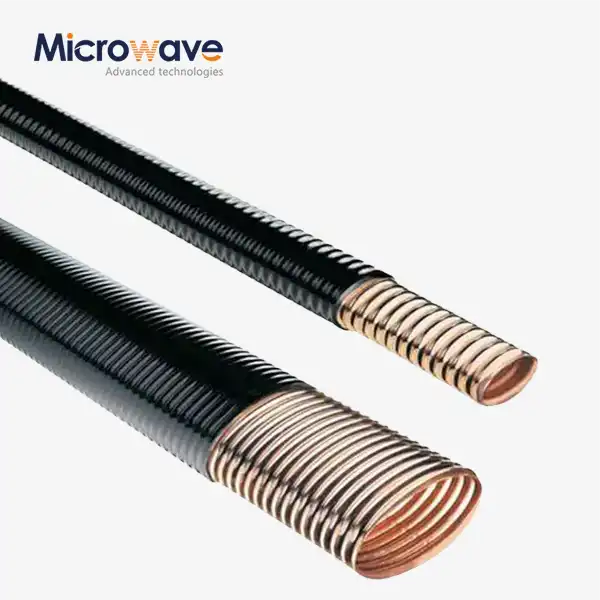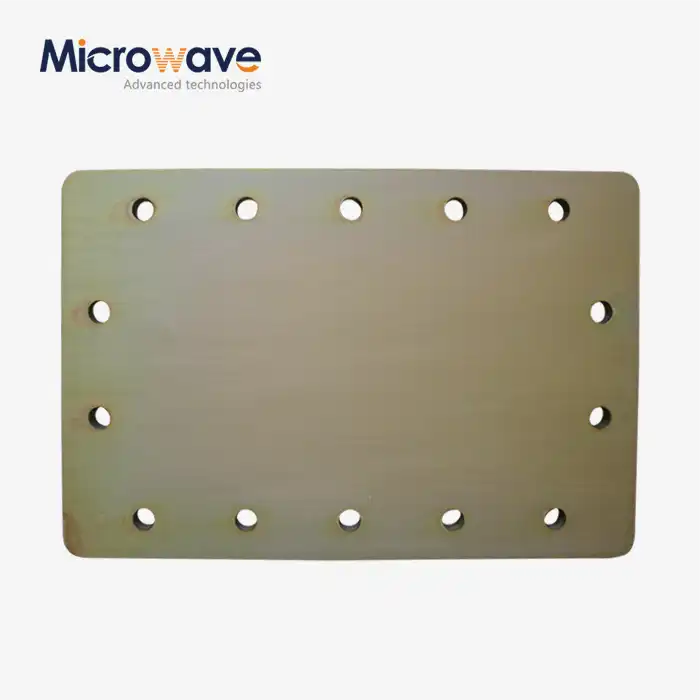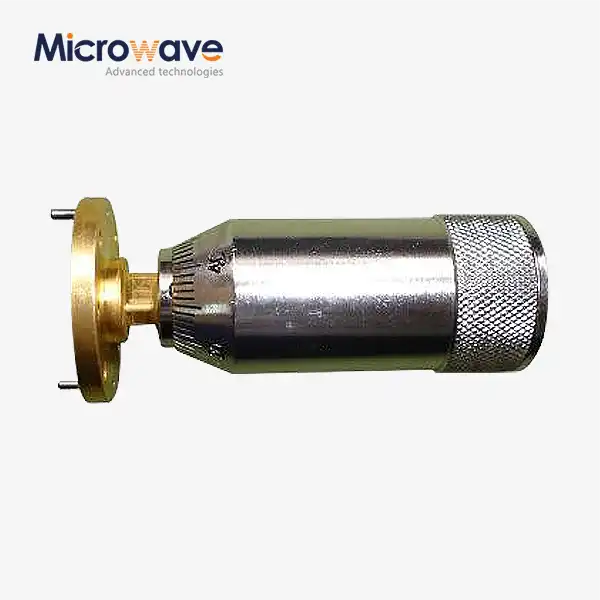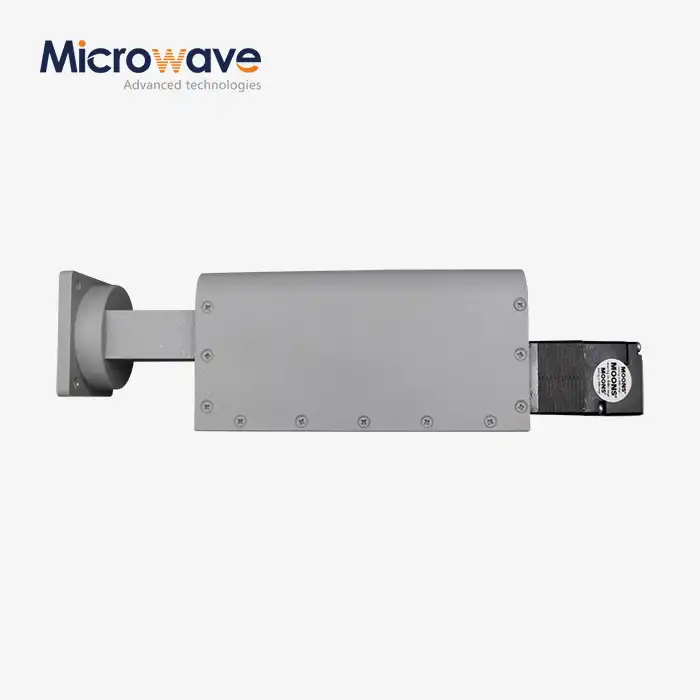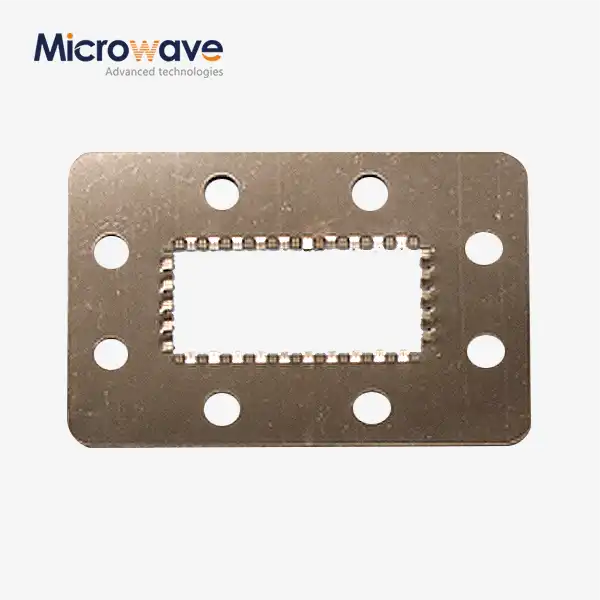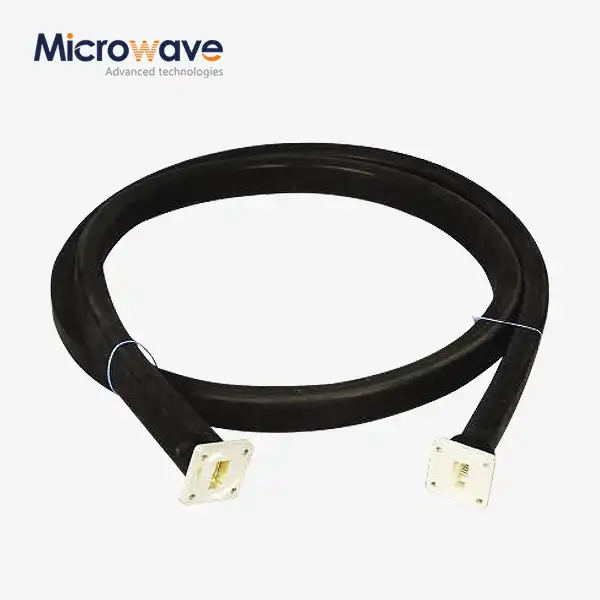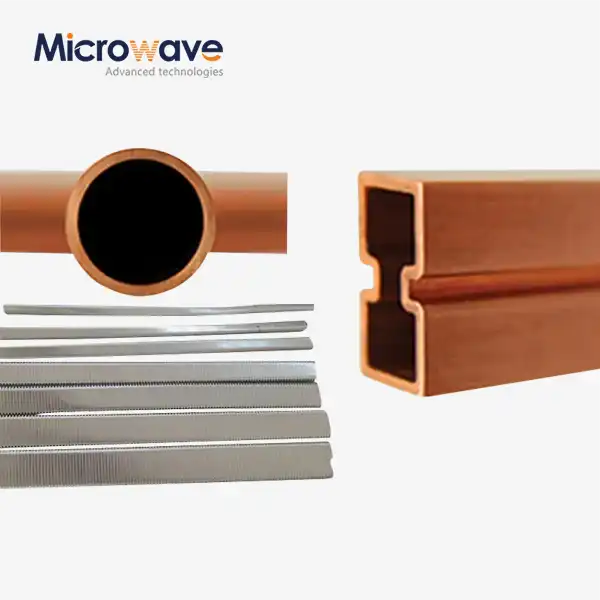What Are the Key Components and Design Principles of Waveguide Cable Assemblies?
In the realm of high-frequency communication systems, waveguide cable assemblies serve as critical components that ensure reliable signal transmission with minimal loss. These specialized assemblies combine the superior performance of waveguides with the flexibility of cables, creating solutions that are indispensable in satellite communications, defense applications, and advanced telecommunications infrastructure. Understanding the key components and design principles of waveguide cable assemblies is essential for engineers and procurement specialists seeking optimal performance in microwave frequency applications. A Waveguide Cable Assembly typically consists of precision-engineered waveguide sections connected to flexible or semi-rigid cables through specialized transition components, supporting frequencies up to 110 GHz while maintaining signal integrity across challenging environments and complex system architectures.
Essential Components of Waveguide Cable Assemblies
Waveguide Structures and Materials
Waveguide cable assemblies rely heavily on the quality and precision of their waveguide structures. These hollow metal tubes serve as the foundational element that guides electromagnetic waves with remarkable efficiency at high frequencies. The material composition of these waveguides significantly impacts their performance characteristics. Advanced Microwave Technologies utilizes premium materials including aluminum for lightweight applications, copper for superior conductivity, stainless steel for enhanced durability in harsh environments, and brass for applications requiring excellent machinability and corrosion resistance. Each Waveguide Cable Assembly is manufactured with tight tolerances to ensure optimal electromagnetic performance across the specified frequency bands, which can extend up to 110 GHz. The interior surfaces of these waveguides undergo special treatments to minimize signal loss through resistance, with careful attention to dimensional accuracy that directly influences the waveguide's cutoff frequency and mode propagation characteristics. Advanced Microwave's manufacturing processes incorporate precision CNC machining and specialized electroplating techniques to achieve the exacting standards required for high-performance microwave applications, ensuring that each waveguide component maintains consistent impedance and minimal signal distortion across its operational frequency range.
Transition Elements and Connectors
The interface between waveguides and cables represents one of the most critical design challenges in creating effective Waveguide Cable Assembly solutions. These transition elements must preserve signal integrity while managing the complex impedance matching required when converting between different propagation modes. Advanced Microwave Technologies has developed specialized transition components that minimize insertion loss at these critical junctions, employing sophisticated electromagnetic modeling techniques to optimize performance. The connector systems incorporated into these assemblies include a range of industry-standard options such as flanges for waveguide-to-waveguide connections, along with coaxial interfaces including SMA, N-type, and custom connector solutions for specialized applications. Each Waveguide Cable Assembly features precision-machined connectors that maintain consistent electrical performance across the environmental conditions experienced in aerospace, defense, and telecommunications installations. The company's transition elements incorporate advanced RF design principles to manage the electromagnetic field transformation from the waveguide to the coaxial domain, with carefully designed impedance matching structures that minimize reflection and maximize power transfer at operating frequencies up to 110 GHz, ensuring reliable performance even in systems with stringent signal integrity requirements.
Cable Components and Specifications
The cable portion of a Waveguide Cable Assembly provides the flexibility required for complex installation scenarios while maintaining critical RF performance parameters. Advanced Microwave Technologies offers a comprehensive range of cable options engineered specifically for high-frequency applications, with constructions that balance flexibility, loss characteristics, and power handling capabilities. These cables maintain a standard impedance of 50 Ohms to ensure compatibility with industry-standard equipment and minimize reflection issues in system integration. The cable components incorporate specialized dielectric materials that preserve signal quality while providing mechanical stability across operating temperature ranges from -40°C to +85°C, making them suitable for both controlled environments and exposed installations. The outer jacketing and shielding systems employed in these Waveguide Cable Assembly products provide excellent isolation from external interference, with additional protection options available for installations in particularly challenging electromagnetic environments. Advanced Microwave's engineering team selects appropriate cable specifications based on application requirements, balancing factors such as insertion loss per unit length, phase stability under flexure, and power handling capacity to deliver optimized solutions. For applications requiring minimal loss over longer distances, the company offers low-loss cable variants with specialized dielectric formulations and precision manufacturing techniques that maintain signal integrity while providing the necessary mechanical characteristics for reliable field deployment.

Design Principles for High-Performance Waveguide Systems
Impedance Matching and Signal Integrity
Achieving optimal signal transfer in Waveguide Cable Assembly designs demands meticulous attention to impedance matching throughout the entire signal path. Advanced Microwave Technologies employs sophisticated electromagnetic simulation techniques to design transitions and interfaces that maintain consistent impedance characteristics, typically standardized at 50 Ohms. This careful matching minimizes signal reflections that would otherwise create standing waves and reduce power transfer efficiency. The engineering team evaluates each assembly design using specialized test equipment capable of measuring performance parameters at frequencies up to 110 GHz, ensuring that signal integrity is preserved even at the highest operating frequencies. Voltage Standing Wave Ratio (VSWR) represents a critical performance metric for these assemblies, with Advanced Microwave's products engineered to achieve exceptionally low VSWR values that indicate minimal signal reflection. Each Waveguide Cable Assembly undergoes comprehensive testing to verify performance across its specified frequency range, with particular attention to phase linearity and group delay characteristics that can impact digital modulation schemes in modern communication systems. The company's design approach incorporates precision tolerancing and quality control measures that ensure consistent electrical performance from unit to unit, allowing system designers to confidently specify these components in applications where signal integrity directly impacts system performance and reliability. Advanced impedance matching techniques employed in these assemblies include tapered transitions, compensated junction designs, and specialized RF structures that manage the complex electromagnetic field transformations occurring at material and geometric boundaries.
Environmental Considerations and Durability
Waveguide Cable Assembly components frequently operate in challenging environments that demand exceptional durability and reliable performance across extreme conditions. Advanced Microwave Technologies incorporates environmental considerations into every design aspect, from material selection to sealing technologies that protect sensitive internal components. The broad temperature range support of -40°C to +85°C ensures stable operation across both arctic and desert deployment scenarios, with specialized versions available for even more extreme temperature requirements. Each Waveguide Cable Assembly incorporates protective features against moisture ingress, salt fog exposure, and mechanical stress, with options for pressurization in applications where hermetic sealing provides additional performance assurance. The materials selected for these assemblies undergo rigorous environmental qualification testing to verify their suitability for specific deployment scenarios, including aerospace applications where radiation resistance and outgassing characteristics become critical considerations. Advanced Microwave's quality assurance processes include environmental stress screening that identifies potential reliability issues before field deployment, ensuring that each assembly will maintain its specified electrical performance throughout its operational lifetime. The company's engineering team works closely with customers to understand specific environmental challenges in their applications, developing customized solutions that balance performance, durability, and cost considerations while meeting international standards for environmental compliance including RoHS requirements. Additional protective features available for these assemblies include ruggedized jacketing, strain relief systems, and specialized mounting provisions that enhance long-term reliability in vibration-prone installations.
Frequency Range Optimization and Power Handling
Optimizing Waveguide Cable Assembly designs for specific frequency ranges represents a core engineering principle at Advanced Microwave Technologies. The company offers solutions spanning from 1 GHz to over 110 GHz, with each assembly specifically designed to provide optimal performance within its target frequency band. This frequency-specific approach ensures that customers receive components with the ideal balance of size, weight, and electrical performance for their particular application requirements. Power handling capability represents another critical design consideration, particularly in transmit applications where signal amplification creates substantial RF power levels. Advanced Microwave's high-power Waveguide Cable Assembly variants incorporate specialized materials and construction techniques that dissipate heat effectively while maintaining dimensional stability under thermal stress. The company's engineering team employs advanced electromagnetic simulation tools to analyze power distribution within each assembly, identifying potential hotspots and implementing design modifications that enhance power handling capacity without compromising other performance parameters. These assemblies undergo comprehensive power testing to verify their capabilities under continuous operation, with additional qualification for peak power handling in pulsed applications common in radar systems. Frequency-specific optimizations include dimensional tuning of waveguide structures, specialized transition designs that maintain mode purity across the operational bandwidth, and material selections that balance electrical performance with thermal management requirements. Advanced Microwave's extensive experience in high-frequency systems allows them to provide guidance on system-level considerations that impact overall performance, including cable routing recommendations that minimize phase distortion in phase-sensitive applications and interface specifications that ensure compatibility with connected equipment.
Application-Specific Customization Approaches
Satellite Communication System Requirements
Satellite communication systems place unique demands on Waveguide Cable Assembly components, requiring exceptional performance across extreme environmental conditions while maintaining precise electrical characteristics. Advanced Microwave Technologies has developed specialized satellite-grade assemblies that meet these stringent requirements, with particular attention to phase stability across thermal cycles that can impact communication link performance. These assemblies support the high-frequency bands common in satellite communications, including Ka-band and above, where Advanced Microwave's expertise in millimeter-wave design becomes particularly valuable. Each Waveguide Cable Assembly intended for satellite applications undergoes additional qualification testing to verify vacuum compatibility, outgassing characteristics, and radiation resistance that could otherwise compromise performance in space environments. The company works closely with satellite integrators to develop custom solutions that address specific mission requirements, including specialized connectors for space-grade interfaces and enhanced shielding for sensitive receiver applications. Weight optimization represents a critical consideration in these designs, with Advanced Microwave employing lightweight materials and innovative construction techniques that minimize the mass penalty associated with high-performance RF components. Satellite communication assemblies often incorporate specialized features such as phase-matched sets for phased array applications, thermally compensated designs that maintain electrical parameters across orbital temperature variations, and specialized verification testing that confirms performance under the combined stresses of launch and space deployment. The company's over 20 years of experience in microwave products has established them as a trusted supplier for mission-critical satellite communication infrastructure, with their Waveguide Cable Assembly solutions deployed in commercial, government, and defense satellite systems worldwide.
Defense and Aerospace Application Considerations
Defense and aerospace applications demand Waveguide Cable Assembly solutions that combine exceptional electrical performance with rugged environmental durability and reliable operation under extreme conditions. Advanced Microwave Technologies has developed specialized products for these sectors, incorporating features such as enhanced vibration resistance, shock mitigation, and specialized materials that withstand the unique environmental challenges encountered in defense systems. These assemblies support critical radar, electronic warfare, and communication functions where performance directly impacts mission success and operator safety. Each Waveguide Cable Assembly designed for defense applications undergoes enhanced quality control processes that verify compliance with applicable military standards, with traceability documentation that supports customer qualification requirements. The company's engineering team has extensive experience addressing the specialized needs of defense contractors, including EMI/EMC considerations, TEMPEST requirements, and integration with legacy systems that may have unique interface specifications. Advanced Microwave's defense-oriented products incorporate additional features such as reinforced connector interfaces that withstand rough handling in field deployments, specialized jacketing that resists abrasion and chemical exposure, and enhanced power handling capabilities required for active electronically scanned array (AESA) radar systems. The customization capabilities offered by Advanced Microwave are particularly valuable in aerospace applications, where space and weight constraints often necessitate specialized form factors that integrate efficiently with surrounding system components. The company's commitment to quality and performance has established them as a preferred supplier for defense integrators seeking reliable Waveguide Cable Assembly components that maintain critical performance parameters under battlefield conditions, with their products supporting systems that operate across ground, airborne, naval, and space domains.
Test and Measurement System Integration
Test and measurement applications demand Waveguide Cable Assembly solutions with exceptional precision and stability characteristics that preserve measurement accuracy across repeated connection cycles and varied environmental conditions. Advanced Microwave Technologies offers specialized metrology-grade assemblies designed specifically for these applications, with enhanced phase stability, amplitude flatness, and connector durability that support reliable test results. These assemblies are particularly valuable in production test environments where consistent performance directly impacts product quality and manufacturing efficiency. Each Waveguide Cable Assembly designed for test applications undergoes additional verification to confirm performance stability over time, with particular attention to connector wear characteristics and cable flexibility retention that impact long-term measurement repeatability. The company provides detailed test data with these assemblies, allowing customers to incorporate component characteristics into their measurement uncertainty calculations and calibration procedures. Advanced Microwave's test-oriented products include phase-matched pairs and sets for differential measurements, high-flexibility options for automated test equipment that requires repeated cable movement, and precision adapters that facilitate connection to various test equipment interfaces while maintaining calibration reference planes. The company's laboratories are equipped with advanced microwave measurement equipment capable of characterizing performance up to 110 GHz, ensuring that each assembly meets its specified electrical parameters across its full operational frequency range. These test-focused Waveguide Cable Assembly products support a wide range of measurement applications, from production testing of communication equipment to laboratory characterization of emerging technologies and field verification of installed systems. Advanced Microwave's engineering team provides consultation services to help customers develop optimal test methodologies that leverage the performance capabilities of these specialized assemblies, enhancing measurement accuracy and repeatability in critical test applications.
Conclusion
Understanding the key components and design principles of waveguide cable assemblies is essential for optimizing high-frequency communication systems. These sophisticated components, with their precision-engineered structures and specialized materials, ensure reliable signal transmission across critical applications in satellite communications, defense, and telecommunications. Advanced Microwave Technologies' extensive experience and commitment to quality make us the ideal partner for your waveguide assembly needs.
Ready to enhance your high-frequency systems with industry-leading waveguide cable assemblies? Contact our expert team today at sales@admicrowave.com to discuss your specific requirements and discover how our perfect supply chain system, rich production experience, and professional R&D capabilities can deliver the custom solutions you need. With our fast delivery, competitive pricing, strict quality control, and superior after-sales support, Advanced Microwave Technologies stands ready to support your most challenging RF applications.
References
1. Johnson, R.C. & Jasik, H. (2022). Antenna Engineering Handbook: Waveguide Components and Assemblies. McGraw-Hill Professional.
2. Williams, D.F. & Gordon, J.S. (2023). Microwave Measurements and Calibration: Advanced Techniques for Waveguide Systems. IEEE Press.
3. Pozar, D.M. (2021). Microwave Engineering: Principles and Applications of Waveguide Transmission. John Wiley & Sons.
4. Chen, L.F. & Ong, C.K. (2023). Materials for High-Frequency Applications in Waveguide Assemblies. Cambridge University Press.
5. Smith, P.T. & Zhang, Y. (2024). Advances in Waveguide Cable Design for Satellite Communication Systems. Journal of Microwave Theory and Techniques, 72(3), 218-231.
6. Ramirez, A. & Thompson, B. (2023). Environmental Testing Methodologies for Ruggedized Waveguide Cable Assemblies in Defense Applications. Defense Electronics Quarterly, 45(2), 156-172.




